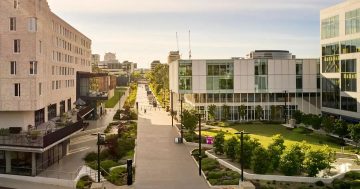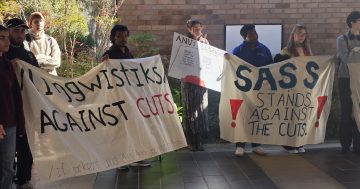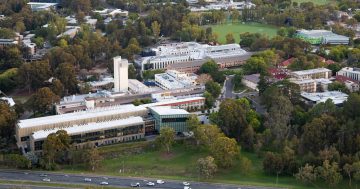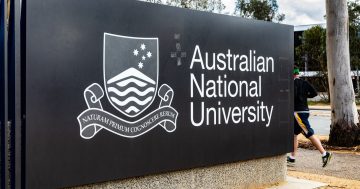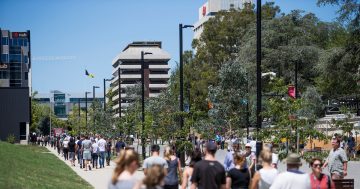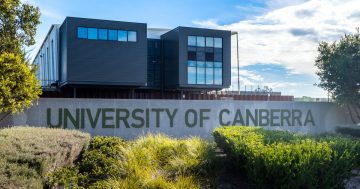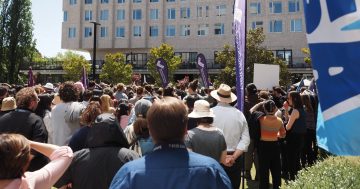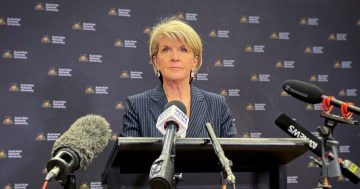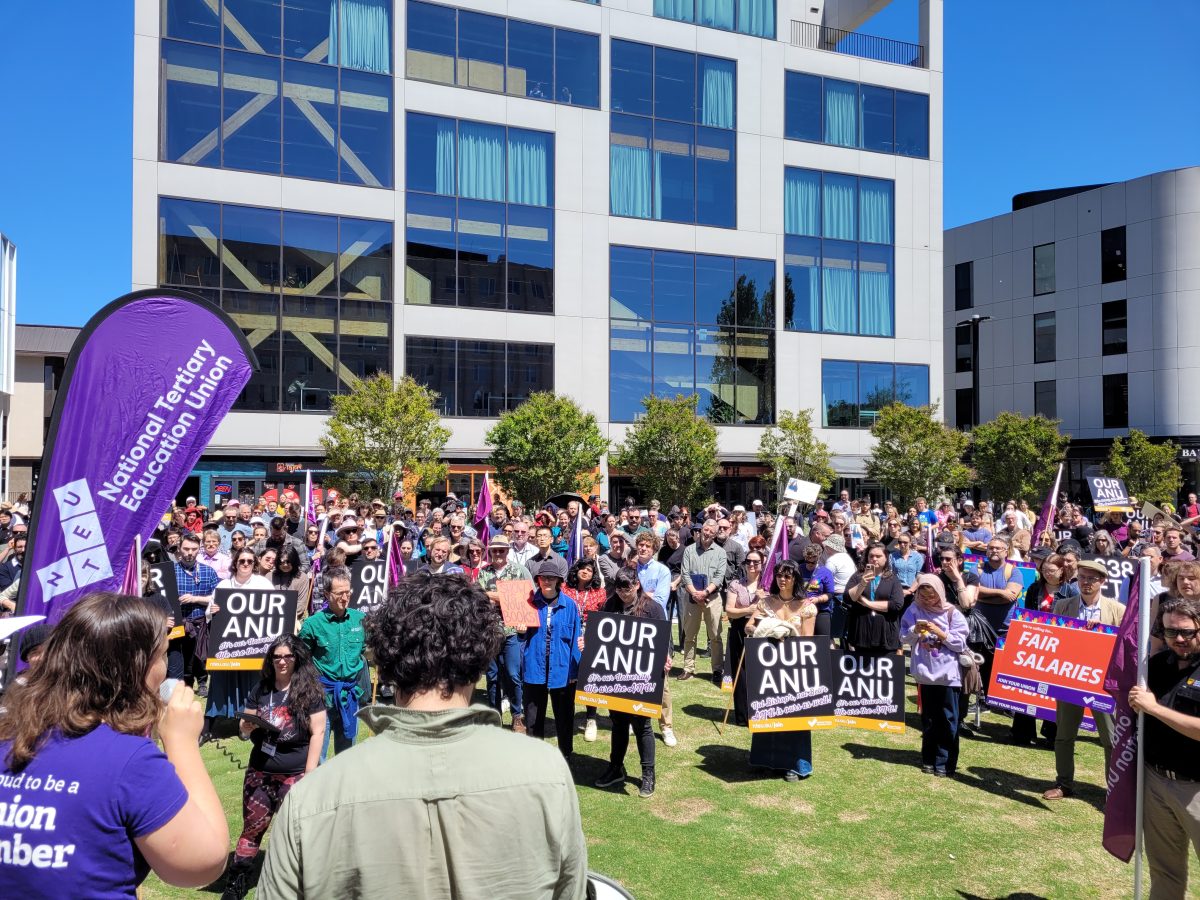
The ANU’s attempts to save money have especially drawn the ire of unions, staff and students. Photo: NTEU.
In the latest season of the hit TV show The Bear, the restaurant receives a lukewarm review that imperils its financial health.
A sponsor Uncle conveys that if the place doesn’t turn around money-wise, he’ll shutter the establishment.
To address this situation, a team of efficiency experts are brought in to cut costs.
Everything is on the chopping block – staff, space, food orders, equipment, coupled with the recognition that dishes need to be pumped out faster.
Only slowly, almost as an afterthought, do the head chefs realise that the menu needs to change, to bring to the fore the truly exceptional dishes that have proven successful.
Efficiency gains alone will not right their sinking ship. Having a stellar product with exceptional service delivery is the only way they will catch a coveted Michelin star.
Unfortunately, many Australian universities have focused exclusively on efficiency gains – cutting costs and ‘rightsizing’.
Few have conveyed to the public how their ‘menu’ of offerings has been refined and made truly exceptional.
The Vice-Chancellor of the Australian National University has repeatedly noted that progress is being made in cutting costs so that ANU can live within its means.
The institution is trying to claw back $250 million in operating deficit. While schools within the university are being restructured or considered for disestablishment, hundreds of staff positions have been cut.
While the VC has communicated that ANU needs to live within its means, there are few indications that ANU has a plan in place to address what comes after efficiency gains have been realised.
How will it attract future students? Aside from cutting costs, what message does ANU intend to send out to prospective students? “We’ve stabilised the hemorrhaging, come study with us”?
The University of Canberra’s Vice-Chancellor, Bill Shorten, has also been working diligently to cut a sizeable operating deficit of over $40 million. The UC has reduced total staff numbers by approximately 200 and streamlined a range of operations.
The VC has stated that he is confident that UC will significantly improve its financial outcomes from last year and become sustainable.
Sustainability is, of course, an admirable goal. Mr. Shorten has conveyed that his aim is not for UC to become a sandstone university, but one that focuses on providing practical educational outcomes. He has spoken of enhancing micro-credentialing and highlighting short courses.
UC Chancellor Lisa Paul adds that UC is well placed to deal with headwinds and seize opportunities that exist this year.
But is turning the financial ship around and looking at what is occurring in the near-term enough?
Ever before COVID changed the Australian higher education landscape, multiple consultancies noted that universities could not rely on an ever-increasing number of domestic and international students to support their institutions.
They recommended that universities evolve into continuous improvement institutions, offering flexible, customisable and innovative products and services.
In their own way, they said that moving from the mediocre to the sought-after is just as essential for a university as it is for a restaurant, or any hugely successful business.
Australian universities, including those in Canberra, could benefit by communicating how their institution will qualitatively improve and become a desirable place of learning, once efficiency gains have been realised.
Several suggestions for leadership to ponder as they work toward cutting costs:
- Consider what happens the day after achieving the goal of “living within targeted financial means”.
- After realising efficiency gains, what within the “menu” of offerings needs to change?
- Dedicate resources to look beyond the present, with a desire to “see around the corner” (akin to Steve Jobs’ fixation at Apple).
- Create a foresight function that investigates best practices from around the world and asks leaders, “What if we do that here?” and “How can we do it better?”
- Encourage annual reviews of long-standing policies, and yes, even goals. Mid-course reviews and corrections are exhibited by innovative organisations.
- Support open dialogue between staff at all levels of the organisation – bottom-up and top-down.
- Award continuous improvement efforts, financial and non-financial alike, and communicate leadership’s support for out-of-the-box thinking.
There was a time when universities didn’t need to worry about their financial survival.
They were supported by government, had a healthy feeder stream of international students, and enjoyed knowing that their geographic catchment area provided sufficient student numbers to keep them in business. Those days are over.
Today, university leaders need to be able to answer the question: aside from having cut costs and reorganised, why should students attend your institution?
Allen Hepner is an elected fellow at the US National Academy of Public Administration and previously worked in the planning and transformation areas of the University of Canberra.












